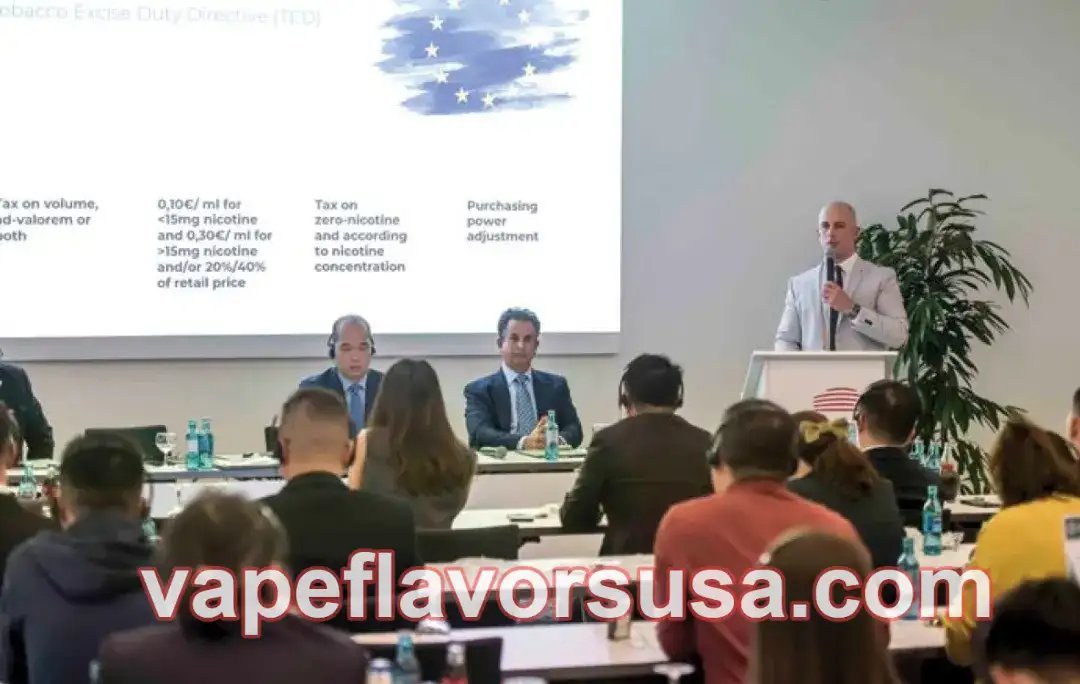2024 was a year of significant upheaval and change for the international tobacco industry, with key developments reshaping the global landscape. From skyrocketing interest in next-generation products (NGPs) to the continuous struggle with tobacco leaf shortages and mounting pressures from both consumers and governments, the tobacco giants found themselves navigating a turbulent environment. Add to that the increasingly complicated situation in Russia following the ongoing Ukraine conflict, and it’s safe to say the industry faced some serious challenges this year. Let’s break it all down.

Next-Generation Products (NGPs): The Hottest Trend with a Rocky Road Ahead
Next-generation tobacco products, particularly Heat-Not-Burn (HTP) devices and vapes, have continued to capture consumer interest globally, especially in Western markets. HTP products, which use heated tobacco instead of burning it, have gained traction in Europe, prompting the European Commission to extend the ban on flavored HTPs despite this contradicting its ambitious 2040 “smoke-free generation” goal. These developments underscore the growing popularity of NGPs as an alternative to traditional cigarettes.

But let’s be real: with growth comes regulation. While demand for NGPs has soared, governments across the globe continue to impose strict bans on these products. Some countries outright ban vaping, while others impose severe restrictions on where and how these products can be marketed or sold. Interestingly, there are nations that fall into a regulatory gray zone, where consumers can vape without much oversight, raising concerns about the safety and quality of unregulated products.
The World Health Organization (WHO) and many public health advocates continue to treat NGPs with skepticism, often labeling them no less harmful than regular cigarettes. In fact, there are currently 16 countries where vaping is completely banned, and another 28 nations where restrictions are in place. Some even classify vaping as a criminal offense. The situation is a bit like buying 195 stocks, only for 69 to plummet and 12 to show signs of decline—panic mode, right?
The final verdict on NGPs will, of course, depend on comprehensive scientific research and long-term clinical results. Governments are keen on reducing smoking rates, but they need to take a holistic approach that also considers the potential harm-reduction benefits of these next-gen alternatives. After all, if consumers have a right to safer products that still give them a satisfying experience, that’s something worth acknowledging, right?
Tobacco Leaf Shortage Eases, But Farmers Aren’t Out of the Woods
Post-pandemic, the global tobacco leaf market showed signs of improvement, but it’s not all sunshine and rainbows. While the supply shortages in certain regions have improved, tobacco farmers are still feeling the pressure. For instance, Indonesia’s tobacco sector is growing rapidly, but the country still faces an annual shortfall of around 120,000 tons of tobacco. This has created a dependency on imports to meet the demand for smoking products.

Over in Zimbabwe, the world’s second-largest producer of FCV (flue-cured Virginia) tobacco, things are looking better. The country sold 291 million kilograms of tobacco in 2024, inching closer to its target of 300 million by 2025. However, despite this growth, the country’s tobacco sector remains under pressure to increase profitability and reduce farmers’ reliance on foreign funding.
In the U.S., large tobacco farms are on the decline, and the outlook isn’t all that bright. With rising costs and regulatory pressures, the future of the U.S. tobacco farming industry seems increasingly precarious. Meanwhile, in the European Union, tobacco farmers are facing a severe crisis. The decline in cigarette consumption across the continent, coupled with the effects of the COVID-19 pandemic, has left many smaller manufacturers in the dust. With energy, fertilizer, and transport costs skyrocketing due to the Russia-Ukraine conflict, many tobacco farmers in Italy, Greece, Spain, and other major EU production countries are finding it harder than ever to survive.
Generation-Specific Smoking Bans Hit Snags
2024 saw bold moves in the fight against smoking, with New Zealand and Malaysia attempting to implement generation-specific smoking bans (often referred to as “smoke-free generation” laws). These bans would have stopped people born after a certain year (2008 in New Zealand, 2007 in Malaysia) from ever legally purchasing cigarettes or vapes.
However, as of late 2024, these initiatives began to unravel. New Zealand’s highly anticipated smoking ban, which was set to take effect in mid-2024, was suddenly scrapped by newly-elected Prime Minister Christopher Luxon. The government decided that economic growth and reducing inflation were higher priorities, leading to the removal of these restrictions. Similarly, Malaysia’s plans for a generation ban were revised, with the government removing the age-based tobacco ban from its public health legislation.
The reasons behind this reversal are multifaceted. One major concern is the potential growth of illegal markets. Critics argue that banning smoking for specific generations could encourage black market sales of cigarettes and vapes, which would not only create safety risks but also fuel organized crime. Moreover, such policies could harm the economy, with estimates suggesting Malaysia could lose up to $726 million in GDP by 2040, alongside significant job and tax revenue losses.
The challenges of enforcing such bans also looms large. How would governments monitor and implement these restrictions effectively, especially in the face of widespread consumer resistance and underground markets? As the situation unfolds, it’s clear that even nations that are committed to reducing smoking must weigh these difficult issues carefully.
Illicit Tobacco Products: The Growing Elephant in the Room
Another thorn in the side of the tobacco industry is the explosive growth of illegal tobacco products. As legitimate products face higher taxes and increasing regulations, illicit tobacco markets are thriving in numerous countries. In South Africa, organized criminal groups are smuggling cigarettes across borders at an alarming rate, often with the support of corrupt politicians and business leaders. The situation is so dire that it now threatens national security, with South Africa becoming a key hub for illicit tobacco trade in Africa.
Malaysia is also grappling with a massive illegal tobacco crisis, with estimates suggesting that up to 70% of the country’s tobacco market consists of illicit products. The rampant smuggling and counterfeiting are having a serious impact on the market, with the government losing millions in tax revenue.
India has faced a similar issue, with illegal cigarettes flooding the market as taxes on legal tobacco products increase. From 2011 to 2021, the volume of illegal cigarettes grew by a staggering 37%, causing legitimate cigarette sales to plummet. This issue has cost the government more than $19 billion in lost tax revenue annually.
The European Union is not exempt from this issue either. Countries like France, Belgium, and the UK are all seeing increasing volumes of illegal tobacco products, including counterfeit cigarettes. The EU has recognized this as a growing problem, and efforts to tackle it are becoming more urgent.
So, what can governments do to combat this? Some experts suggest lowering tobacco taxes to make legal products more affordable and less attractive to smugglers. By reducing the price gap between legal and illegal products, authorities could undermine the incentive for consumers to turn to the black market.
Big Tobacco’s Dilemma: Stay or Go?
The ongoing Russia-Ukraine conflict has thrown a wrench into the operations of international tobacco giants, with companies forced to reconsider their presence in Russia. Since the conflict began in February 2022, most of the world’s leading tobacco firms have had to choose between pulling out of the Russian market or continuing to do business in a country now subject to international sanctions.
In late 2024, British American Tobacco (BAT) finally decided to exit Russia, selling its assets to a consortium led by the management team of its Russian subsidiary. The deal, rumored to be worth between $2-3 billion, represents a significant loss compared to the value of BAT’s Russian operations. Meanwhile, Imperial Brands also sold its Russian business to a local investment group connected to Megapolis, the country’s largest cigarette distributor.
On the other hand, Japan Tobacco and Philip Morris International (PMI) have so far opted to stay in Russia, albeit under increasingly difficult circumstances. Despite the ongoing war and economic sanctions, these companies have continued to operate, albeit with certain restrictions. PMI, for example, has refrained from introducing new heated tobacco products in Russia, but continues to sell its existing portfolio of cigarettes and vapes.
Innovation Keeps the Industry Alive
Despite the challenges, the tobacco industry is far from standing still. 2024 saw a slew of technological innovations, from new vaping devices to heat-not-burn systems that are changing the way people consume tobacco.

Philip Morris International introduced its latest innovation, the IQOS ILUMA, which promises to provide a smoother and more satisfying experience for consumers. Meanwhile, Smoore International debuted its FEELM 2.0, a disposable vape that offers over 1,000 puffs in a compact 2mL package, a game-changer for the convenience-driven consumer.
But it’s not just the big names making waves. Smaller manufacturers are also making strides, especially in areas like tobacco heating and flavor delivery. Non-contact heating technology, for example, is an emerging trend that promises to provide a more consistent and satisfying experience by heating the entire tobacco stick, not just the core.
As countries tighten regulations on nicotine content and flavoring, innovations like NicSelect T-Max have emerged. This new nicotine compound offers an intense rush with lower nicotine doses, appealing to those who want the sensation of smoking without the harmful effects of higher nicotine concentrations.
Conclusion: A Shifting Industry with Big Questions Ahead
The international tobacco industry has undergone some serious changes in 2024, and it’s clear that the road ahead will be anything but smooth. While next-gen products like vapes and HTPs are on the rise, governments continue to impose heavy regulations, making the future uncertain. With illicit products threatening to undermine

